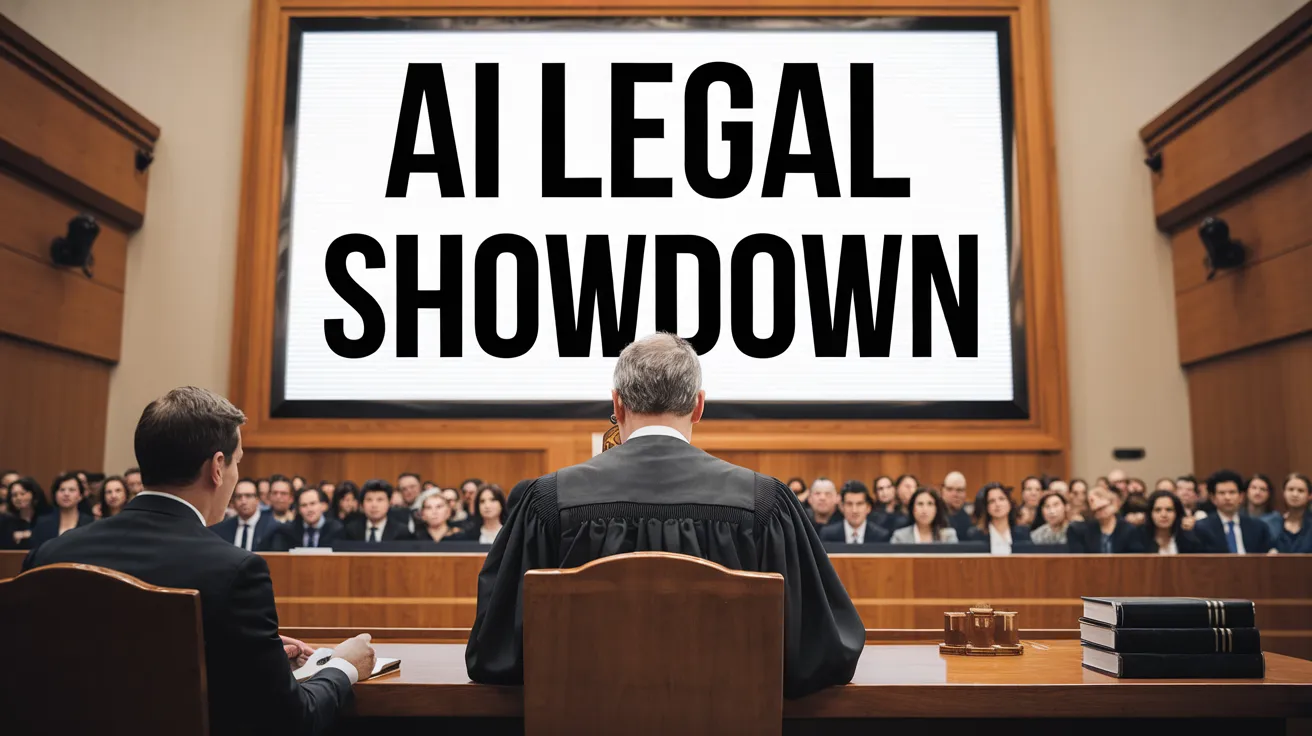AI’s Legal Showdown: Impact on Entertainment Jobs

In an era where merging technology and creativity seems inevitable, the world of entertainment is grappling with the consequences of generative AI. The existential threat posed by AI to traditional artistic roles was highlighted at a recent digital arts festival in Portugal, known as THU. The event gathered approximately 750 aspiring artists who sought inspiration while facing an industry on the brink of disruption. From surreal AI masterpieces, such as a video of a one-legged eagle with a wolf-headed goose, to heated discussions about copyright issues, the atmosphere was palpably charged with both anxiety and a measure of optimism.
At this festival, conversations frequently circled back to the potential impact of AI on jobs in the entertainment sector. This year alone, it’s projected that generative AI could disrupt over 200,000 entertainment jobs in the U.S. by 2026. A disconcerting petition opposing the unlicensed use of creative works for AI training has garnered support from over 25,000 industry professionals, reflecting the palpable fear that artists like Julianne Moore and Kazuo Ishiguro have of losing their livelihoods.
Underlying this tension is the reality that AI tools like OpenAI’s newly unveiled video generator, Sora, and Runway AI’s innovative projects are swiftly redefining how content can be created. Tyler Perry’s realization that he could create films without expensive sets marks a significant shift. And with major film studios collaborating with AI companies to enhance production efficiency, the panic within the industry becomes increasingly justified.
Amidst this turmoil, artists at the THU expressed strong sentiments against generative AI. João, a young Portuguese designer, emphasized that authentic creativity requires human experiences, while Rosa, a Spanish artist, lamented the job losses AI could precipitate. With personal stories of job loss and diminished opportunities, these emerging creators showcased the personal stakes at play in the AI revolution.
The broader narrative is not just about job displacement, as evident from the experiences recounted at THU. Artists revealed that companies are increasingly resorting to AI for tasks previously allocated to human artists, effectively deeming illustrated pitches as obsolete. In a striking example, a significant loss of over 10,000 jobs was reported within the gaming industry, alongside serious layoffs at major companies like Activision Blizzard and Riot Games.
As part of the legal ramifications surrounding AI, Natalia Ortiz, a prominent fine artist and concept designer, has launched a class-action lawsuit against several AI firms. Ortiz claims these companies utilize copyrighted works from artists without consent, arguing that this method constitutes a severe violation of creative rights. She labels this appropriation as a form of identity theft, akin to stealing an artist’s entire life work. Ortiz asserts the potential for ethical AI practices but acknowledges the difficulty of reversing current trends. “Once the models are trained, they can never forget,” she states. Ortiz’s lawsuit, which is progressing to discovery, could yield significant implications for the industry and the use of AI-generated content.
Conversely, proponents of the tech, such as Cristobál Valenzuela from Runway AI, argue that AI presents a solution to burgeoning production costs, ultimately making creativity more accessible. Valenzuela contends that AI will not eliminate jobs but will shift the nature of employment within the industry, suggesting a future where reduced costs could actually lead to increased hiring. He compares AI to traditional tools like pens, underscoring that technology inherently accelerates processes and enhances productivity rather than eliminates opportunities.
As the discussion unfolded at THU, seasoned professionals urged younger artists to shift their perspectives towards AI. One speaker underscored that historical shifts in adaptability were central to the evolution of creative industries. In the face of technological advancements like CGI, which once posed similar threats to traditional animation, experts encouraged artists to embrace AI as a potential boon rather than a detriment.
While the debate around AI rages on, the reality is clear: the interplay between technology and creativity is reshaping the entertainment landscape. The movement toward indie creation facilitated by AI tools could democratize content production, allowing emerging creators previously restrained by financial limitations to enter the market. This change is both an opportunity and a challenge as the major studios begin to take note of the viability of independent voices.
In conclusion, the intersection where AI and creativity meet is fraught with challenges but also ripe with potential. The artists and industry veterans at THU comprise a community that is wrestling with the implications of these changes as they navigate an uncertain future. Both the legal challenges posed by Ortiz’s claims and the competitive advantage touted by AI advocates signal the pressing need for clarity on the ethical use of technology in creative fields. Amid the chaos, the call for artists to adapt and seize the opportunities AI presents remains resonant, echoing through the digital arts community and beyond.